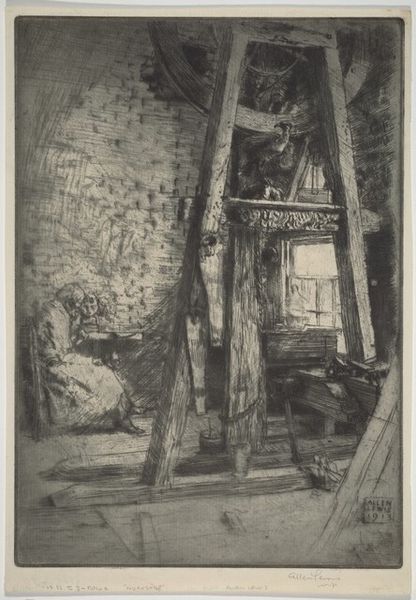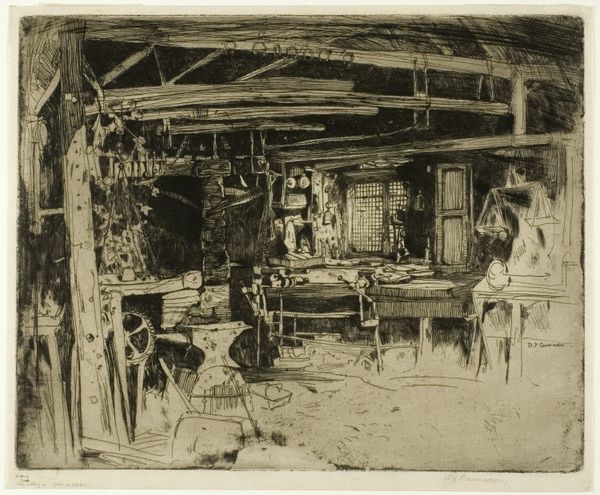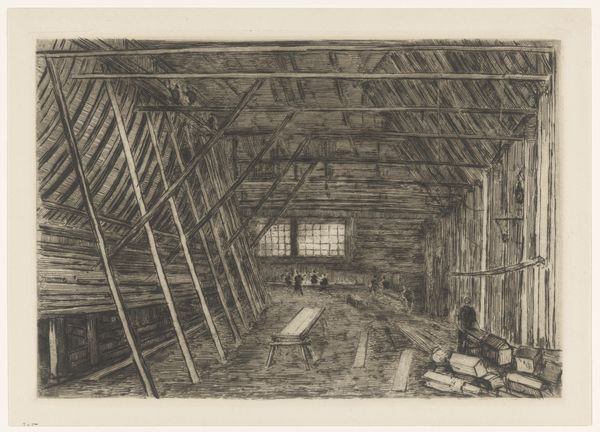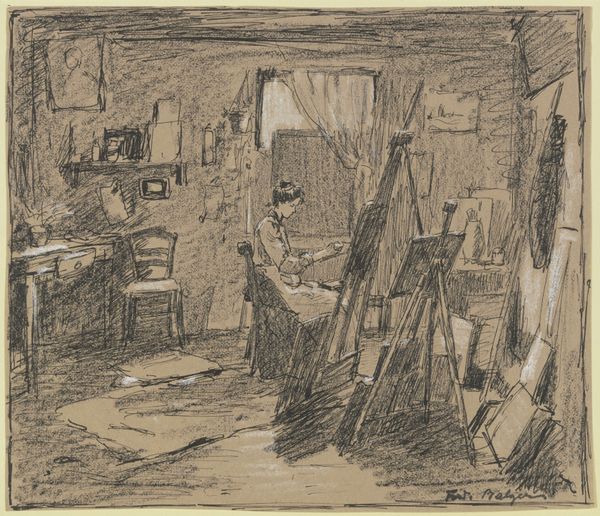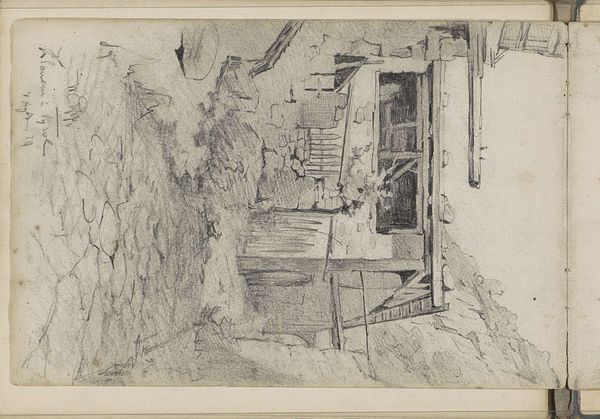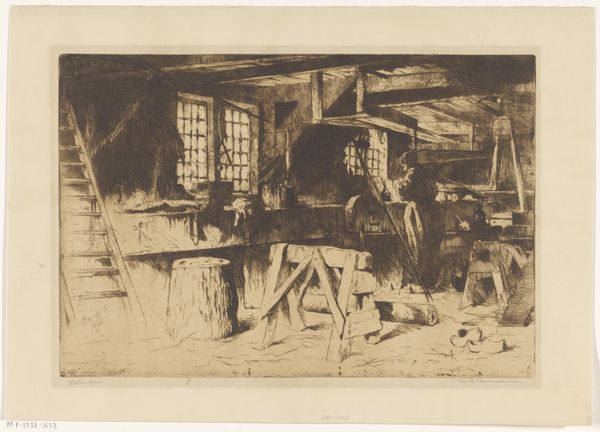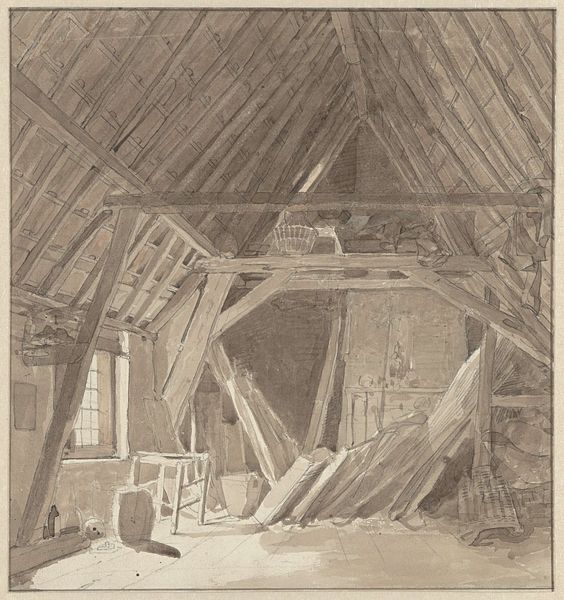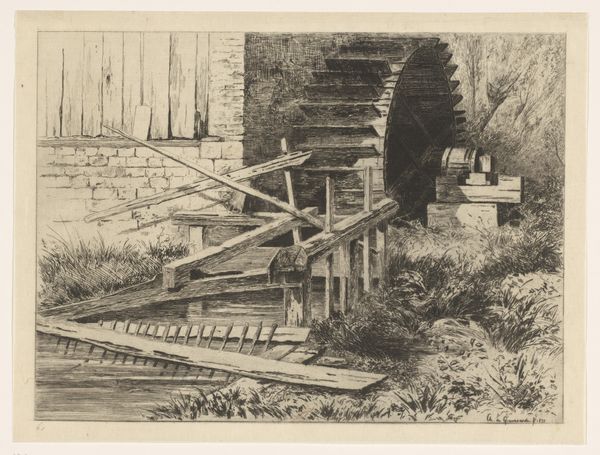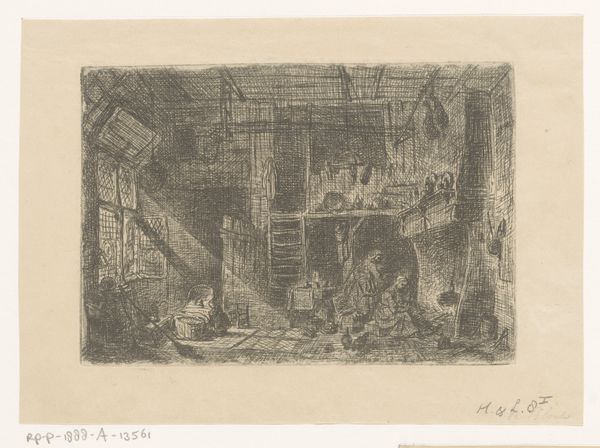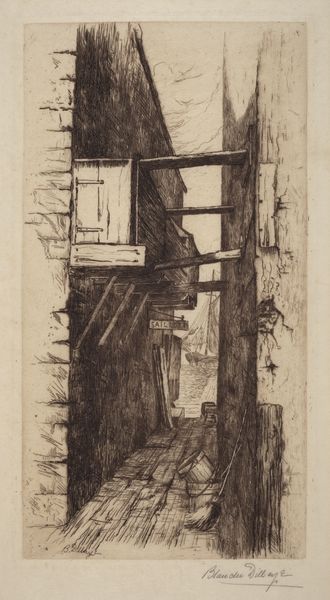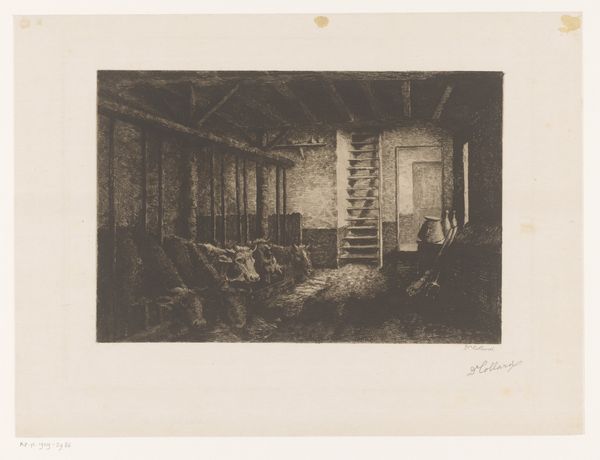
drawing, pencil
#
drawing
#
medieval
#
pencil
#
genre-painting
#
realism
Dimensions: height 242 mm, width 322 mm
Copyright: Rijks Museum: Open Domain
Editor: This drawing, "Interior of a Cellar" by Petrus Franciscus Greive, created sometime between 1821 and 1872, is deceptively simple. Done in pencil, it has a certain starkness to it, a kind of gritty realism. What strikes me most is the contrast between the darkness of the cellar and that open doorway beckoning light, creating the work’s primary focal point. How do you interpret this work? Curator: That beckoning doorway, as you call it, acts as more than just a source of light. It symbolizes the allure of the unknown, perhaps even hope within the confinement. Notice the composition: the weighty barrels, the rough-hewn steps. They pull us down into the depths. This interior has the feel of memory embedded within it. What purposes do you imagine this cellar serving in everyday life? Editor: Probably storage for food or drink. It makes me think of Dutch genre paintings depicting everyday life. It seems a rather romanticized version of hard labor; and there is very little if any real-life anecdotal elements. But do these common items like barrels really signify something more beyond the immediate interpretation? Curator: Everything signifies *something*! Consider the barrel: a vessel, a container of sustenance, even a symbol of Bacchus, god of wine, ecstasy, and liberation. Its form is timeless; such cultural connotations are nearly permanent and always with it. What is truly striking, however, is Greive’s juxtaposition of the quotidian and the implied ethereal space beyond the portal, no? It gives weight to these everyday elements. Editor: You're right, I hadn’t thought about how heavily those cultural symbols were influencing my read of what felt like a more or less straightforward scene. It really speaks to how much historical context impacts art interpretation. Curator: Precisely! The artist captures and freezes memory. That cellar embodies our own cultural past that is not totally retrievable through sight.
Comments
No comments
Be the first to comment and join the conversation on the ultimate creative platform.
